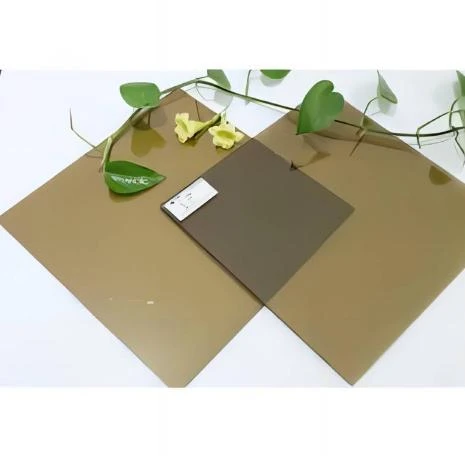The Role of Architectural Glass in Modern Design
In contemporary architecture, glass has evolved from being merely a functional material to a design statement that embodies transparency, lightness, and innovation. Architectural glass plays a pivotal role in shaping the aesthetic and functional qualities of buildings, transforming how we interact with our environments.
One of the most significant advantages of architectural glass is its ability to create visual connections between the interior and exterior spaces. Large glass panels can seamlessly integrate the indoors with the outdoors, allowing natural light to flood into living and working areas. This not only enhances the ambiance but also promotes occupant well-being by connecting them with nature. By utilizing glass walls and windows strategically, architects can craft spaces that feel open and inviting, thereby reducing the need for artificial lighting during the day.
Moreover, advancements in glass technology have expanded its potential uses in architecture
. Modern architectural glass can be manufactured in various forms, including insulated, laminated, and fritted glass, providing options that enhance energy efficiency and safety. For instance, insulated glass units (IGUs) help regulate indoor temperatures by minimizing heat transfer, thereby reducing energy consumption and improving sustainability. Laminated glass, with its added security and soundproofing qualities, is increasingly employed in urban environments where noise pollution can be a concern.
architectural glass
The aesthetic versatility of architectural glass is another reason for its popularity among architects and designers. Glass can be treated or tinted to achieve different effects, from reflective surfaces that enhance privacy to colorful glazing that adds artistic flair to buildings. This versatility allows architects to express their creativity while also addressing functional needs.
In addition to its aesthetic and functional benefits, glass can also be a testament to architectural innovation. Iconic buildings such as the Louvre Pyramid in Paris and the Apple Park in Cupertino showcase how glass can be used to create striking visual identities. These structures leverage glass not just for its transparency but also for its structural capabilities, demonstrating that it can play a fundamental role in supporting a building’s design.
As the push for sustainable and energy-efficient construction practices continues, the role of architectural glass is likely to expand further. Future developments may lead to smarter glass technologies, such as photochromic or electrochromic glass, which can adapt dynamically to changing environmental conditions.
In conclusion, architectural glass is far more than just a building material; it is a critical component that influences aesthetics, functionality, and sustainability in modern design. With endless possibilities and innovations on the horizon, its role in shaping the future of architecture is undeniably significant.
 Afrikaans
Afrikaans  Albanian
Albanian  Amharic
Amharic  Arabic
Arabic  Armenian
Armenian  Azerbaijani
Azerbaijani  Basque
Basque  Belarusian
Belarusian  Bengali
Bengali  Bosnian
Bosnian  Bulgarian
Bulgarian  Catalan
Catalan  Cebuano
Cebuano  Corsican
Corsican  Croatian
Croatian  Czech
Czech  Danish
Danish  Dutch
Dutch  English
English  Esperanto
Esperanto  Estonian
Estonian  Finnish
Finnish  French
French  Frisian
Frisian  Galician
Galician  Georgian
Georgian  German
German  Greek
Greek  Gujarati
Gujarati  Haitian Creole
Haitian Creole  hausa
hausa  hawaiian
hawaiian  Hebrew
Hebrew  Hindi
Hindi  Miao
Miao  Hungarian
Hungarian  Icelandic
Icelandic  igbo
igbo  Indonesian
Indonesian  irish
irish  Italian
Italian  Japanese
Japanese  Javanese
Javanese  Kannada
Kannada  kazakh
kazakh  Khmer
Khmer  Rwandese
Rwandese  Korean
Korean  Kurdish
Kurdish  Kyrgyz
Kyrgyz  Lao
Lao  Latin
Latin  Latvian
Latvian  Lithuanian
Lithuanian  Luxembourgish
Luxembourgish  Macedonian
Macedonian  Malgashi
Malgashi  Malay
Malay  Malayalam
Malayalam  Maltese
Maltese  Maori
Maori  Marathi
Marathi  Mongolian
Mongolian  Myanmar
Myanmar  Nepali
Nepali  Norwegian
Norwegian  Norwegian
Norwegian  Occitan
Occitan  Pashto
Pashto  Persian
Persian  Polish
Polish  Portuguese
Portuguese  Punjabi
Punjabi  Romanian
Romanian  Russian
Russian  Samoan
Samoan  Scottish Gaelic
Scottish Gaelic  Serbian
Serbian  Sesotho
Sesotho  Shona
Shona  Sindhi
Sindhi  Sinhala
Sinhala  Slovak
Slovak  Slovenian
Slovenian  Somali
Somali  Spanish
Spanish  Sundanese
Sundanese  Swahili
Swahili  Swedish
Swedish  Tagalog
Tagalog  Tajik
Tajik  Tamil
Tamil  Tatar
Tatar  Telugu
Telugu  Thai
Thai  Turkish
Turkish  Turkmen
Turkmen  Ukrainian
Ukrainian  Urdu
Urdu  Uighur
Uighur  Uzbek
Uzbek  Vietnamese
Vietnamese  Welsh
Welsh  Bantu
Bantu  Yiddish
Yiddish  Yoruba
Yoruba  Zulu
Zulu 

